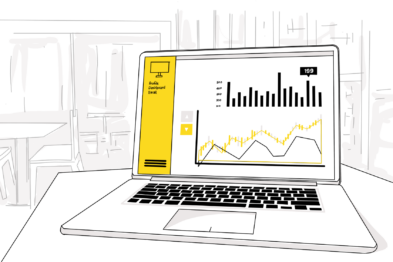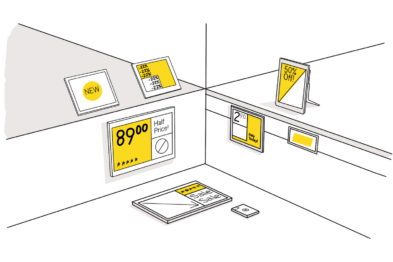Supply Chain Digital Labeling: The Key to Staying on Top of Logistics Management
Supply chain management has undergone unprecedented changes these past few years. Between the eCommerce boom and the struggles that many companies faced when confronted with pandemic-related issues, keeping up with challenges has been both essential and very complex. Amid these complications, digital labeling has been a key factor in maintaining control over deliveries. Here’s what you need to know about supply chain labeling and how it can transform the way you handle supply chain management.
Supply Chain Labeling: Why it Matters
Labels are responsible for the traceability of items at every level of the supply chain. One misprint, misspelling, or a field incorrectly filled out, and the whole system can do nothing against the logistical complications that ensue.
Clear, efficient supply chain labeling remains the best way to ensure global supply chain resilience. It also contributes to the success of inventory management strategies.
→ Find out more about the importance of labeling in retail.
5 Benefits of Digital Labeling for Supply Chain Management:
At SES-imagotag, we believe in the power of automation to enhance retail management practices. Digital labeling provides the most flexible approach to supply chain management, which it improves on many levels.
1. Supply Chain Labeling for Better Supplier Communication
Without proper labeling, understanding what’s inside a sealed box, or even having all the required information about an item sitting on a shelf becomes an inconvenience at best! In essence, labeling is a practice that promotes efficient communication and facilitates supply chain management.
Through digital labeling systems, users no longer have to rely on cumbersome ledgers. Instead, they can simply scan a barcode with a handheld device to read all the tracking and inventory data they need. From one end of the supply chain to the other, everyone who interacts with labeled products receives a clear message. And each time a label is scanned, other key users get updated!
2. Supply Chain Management: Quicker Identification Through Labeling
For users to get real-time status updates for every single item in storage or in transit, there needs to be a very precise system of identification. That’s exactly what supply chain labeling is designed to do!
Digital labeling systems rely on numerical values and patterns to allow quick identification of products at every key stage of the supply chain. At any given time, suppliers and customers know which item is being processed and where. For instance, when picking up a pallet from a warehouse, a quick scan of the barcode will reveal whether the pallet is indeed the correct one and update the system with its new status.
3. Tracking and Organizing with Barcoding
The concept of barcoding has essentially remained the same since the 1950s. It relies on the principles that Morse code – thick and thin lines to replicate the short and long beeps – utilized to encode messages. With the right tool at their disposal, anyone can read it.
Nowadays, the numbers assigned to barcodes – or QR codes – refer the user to a database or a cloud platform from which inventory tracking happens in real-time. And since the information is contained in the system rather than in the code itself, it can be as rich and detailed as possible.
The one caveat remains the quality of physical labels, which are prone to tearing, smearing, and other similar issues. Digital labeling and electronic tags offer a viable and much more durable alternative to printed labels.
→ Find out more about the Vusion technology.
4. Facilitating Recalls through Labeling
A product that can easily be identified and located is also much simpler to recall should the need arise. And since digital labeling makes it possible to update the status of the products on an individual basis, recalls can be refined to the point that single products are returned instead of a whole pallet of otherwise-fine items.
5. Facilitating Shipping through Supply Chain Labeling
Accurate data is essential to get goods delivered to the right place at the right time. Supply chain labeling ensures that every key player has access to the correct information when and where needed.
Digital solutions go one step further by allowing users to update the status of every shipment as it progresses down the supply chain. It can even help them rectify potential mistakes that might have been made along the way. For example, as the recipient tracks their delivery through an app, they could realize that it has been shipped to the wrong address. Instead of having the whole shipment sent back only to have it moved to the correct address again, the data can be updated and the goods rerouted while still in transit, saving everyone time and money.
FAQ
What is the importance of labeling?
Labeling plays a crucial role at every step of the supply chain. From inventory management to product details, shipping, tracking, and even recalls, proper labeling ensures that key players have access to all the information they need.
Why is labeling important in stock management?
Having every item in your inventory clearly labeled is the first step toward creating a centralized stock management system. Proper labeling plays an important role in identifying and storing inbound goods, inventory management, and shipping.
What are 4 types of labeling?
- Inventory labels provide information that aids in stock management.
- Tracking labels provide status updates at every level of the supply chain.
- Shipping labels ensures that relevant shipping information is available at every stage of a delivery.
- Retail labels aid with in-store stock management and provide end consumers with pricing information and other details regarding the products.
Why is labeling and numbering important?
Labeling is a crucial tool for communication and is essential in many areas of our consumer system. As for numbering, it plays a role in the effectiveness of labeling solutions.




